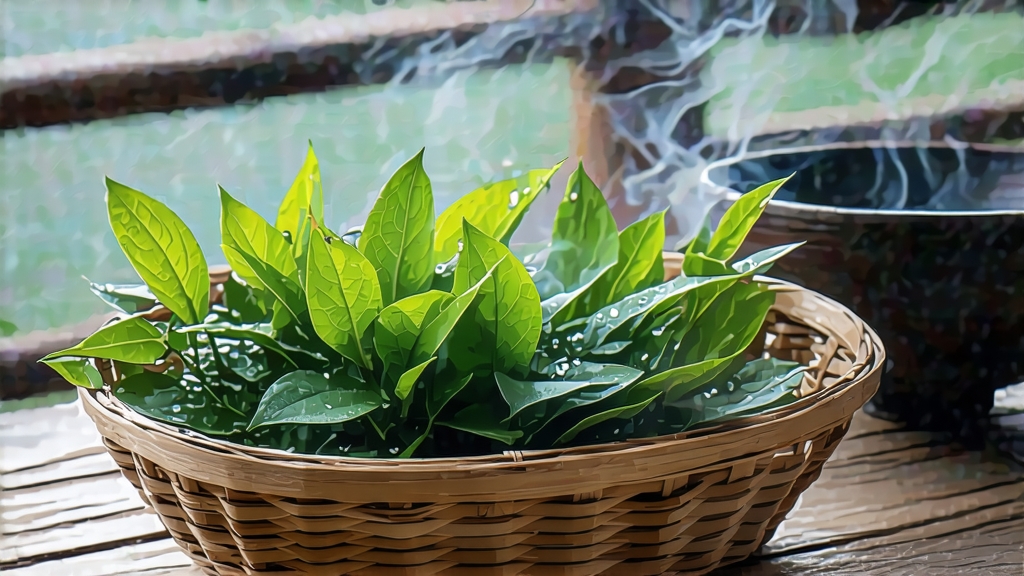
Longjing, often spelled Lung Ching in older romanization, is the most celebrated among China’s more than one thousand green-tea styles. Its name translates literally as “Dragon-Well,” a reference to a square spring near Longjing Village on the western fringe of Hangzhou’s West Lake. According to local lore, the spring hides a dormant dragon whose breath stirs the water and imparts a subtle sweetness to the surrounding soil. Whether or not one believes in dragons, the terroir—acidic, well-drained quartz sand mixed with weathered limestone—does create a mineral-rich broth that no other tea can replicate.
Historical records first mention Longjing during the Tang dynasty (618-907 CE), yet it remained a regional curiosity until the Ming (1368-1644). The turning point came in 1684 when the Kangxi Emperor, on a southern inspection tour, tasted the tea and declared it gong cha (“tribute tea”). His grandson Qianlong went further: during a visit to the Hugong Temple he plucked a handful of leaves himself, then tucked them into his sleeve and rushed back to Beijing to honor his dying mother. The eighteen bushes he supposedly picked from are still preserved on Shifeng Peak; their tiny annual yield is auctioned by the government for prices higher than gold.
Today Longjing is protected under China’s Geographic Indication system. Only leaves harvested within the 168 km² core zone—stretching from Shifeng and Meijiawu to Wengjiashan—may bear the coveted West Lake designation. Beyond that circle, identical cultivars and techniques produce “Zhejiang Longjing,” a pleasant everyday tea but lacking the orchid fragrance and roasted chestnut sweetness that define the original.
Cultivar matters as much as postcode. The traditional clone is Qunti Zhong, an open-pollinated shrub with small, thick leaves that tolerate high heat during pan-firing. In the 1970s researchers released Longjing #43, a high-yield variety that buds ten days earlier and offers a brighter, more uniform infusion. Purists still prefer the old strain for its deeper, lingering aftertaste, while entrepreneurs favor #43 for its phototropic rows of tender, jade-colored shoots that photograph well for social media.
The picking calendar is brutally short. The earliest sprouts, called “first spring,” appear when daytime temperatures hover around 12 °C, usually between mid-March and Qingming festival. One kilogram of finished tea demands between 50,000 and 60,000 plucks—only the single bud or the standard of “one bud with one unfolding leaf.” After Qingming the price drops daily; by Guyu (20 April) the same leaf becomes commodity grade.
Withering, though brief, sets the aromatic tone. Fresh baskets are left in shaded draft for two to four hours, just long enough for grassy aldehydes to dissipate while preserving the primary amino acids that give Longjing its famed umami. Workers turn the leaves every thirty minutes by hand, judging readiness by the limpness of the petiole and a faint scent of fresh-cut cucumber.
Pan-firing is the signature craft. Traditionally the wok is seasoned with tea-seed oil and a swipe of local bamboo, then heated to 280 °C. A master—always called a shifu—lowers the temperature to 90 °C within seconds by slapping a wet cloth against the iron. For ten minutes the leaves are pressed, shaken, and rattled against the metal; the motion coaxes cellular sap to the surface while locking in jade pigments. When the leaf feels like suede the shifu briefly rests it, then repeats the cycle twice more at successively lower temperatures. The entire choreography resembles a flamenco danced with fingertips: too little force and the tea stays grassy; too much and it scorches into burnt spinach. Experienced artisans judge doneness by ear—the crackle of moisture leaving the midrib—and by the aroma of roasted soybean that suddenly shifts to toasted chestnut.
After firing the leaves are still 5 % water, dangerously close to mold. They are cooled on bamboo trays for forty minutes, then “refired” at 60 °C to reach 3 % moisture, cool enough to snap cleanly between fingernails. Finally they are hand-sorted, discarding broken bits and any yellow leaves that would darken the infusion. From basket to tin the entire process must finish within twenty-four hours of harvest,